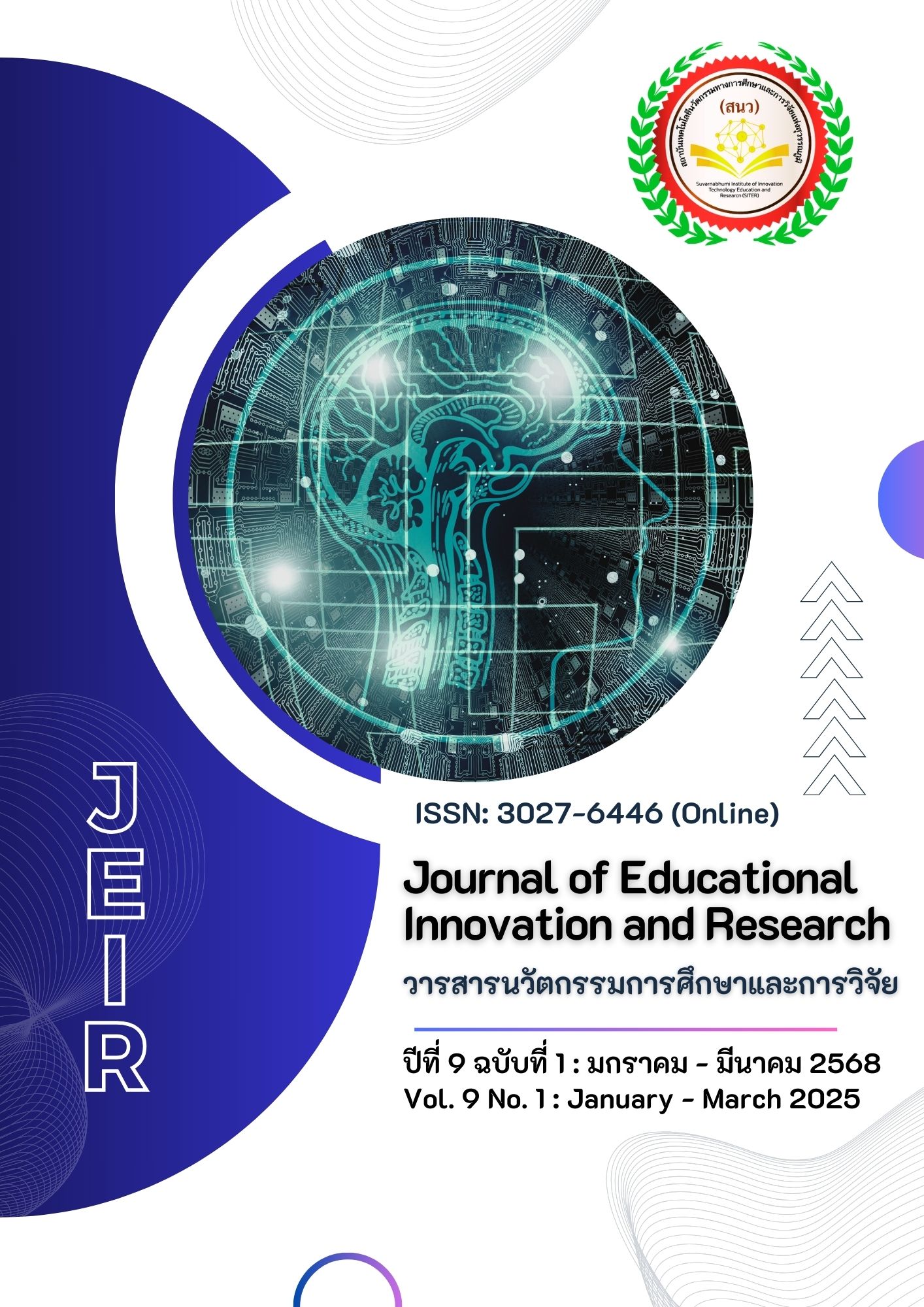จุดแข็ง จุดอ่อน โอกาส และภาวะคุกคามของการพัฒนาภาวะผู้นำที่ไว้วางใจได้ของผู้บริหารโรงเรียนประถมศึกษา
Main Article Content
บทคัดย่อ
บทความนี้มีวัตถุประสงค์เพื่อวิเคราะห์จุดแข็ง จุดอ่อน โอกาส และภาวะคุกคามของการพัฒนาภาวะผู้นำที่ไว้วางใจได้ของผู้บริหารโรงเรียนประถมศึกษา ใช้ระเบียบวิธีวิจัยแบบผสมวิธีพหุระยะ มีกลุ่มตัวอย่าง คือ โรงเรียนประถมศึกษา สังกัดสำนักงานคณะกรรมการการศึกษาขั้นพื้นฐาน ได้มาโดยการสุ่มแบบหลายขั้นตอน และผู้ให้ข้อมูลประกอบไปด้วย ผู้อำนวยการ รองผู้อำนวยการ และครู ทั้งสิ้น 1,185 คน ใช้วิธีคัดเลือกแบบสุ่มหลายขั้นตอน เครื่องมือที่ใช้ในการวิจัย คือ แบบประเมินจุดแข็ง จุดอ่อน โอกาส ภาวะคุกคามของการพัฒนาภาวะผู้นำที่ไว้วางใจได้ของผู้บริหารโรงเรียนประถมศึกษา วิเคราะห์ข้อมูลโดยใช้สถิติเชิงบรรยายคำนวณค่าสถิติพื้นฐาน ได้แก่ ความถี่ ค่าร้อยละ ค่าเฉลี่ย ส่วนเบี่ยงเบนมาตรฐาน และค่าดัชนีความต้องการจำเป็น
ผลวิจัยพบว่า 1) จากการศึกษาสภาพภายใน (จุดแข็ง จุดอ่อน) พบว่า จุดแข็งมากที่สุดคือ การเรียนรู้รายบุคคลผ่านการเป็นที่ปรึกษาด้านสมรรถนะในการบริหารจัดการ รองลงมาคือ การเรียนรู้รายบุคคลผ่านการเป็นพี่เลี้ยงในด้านสมรรถนะในการบริหารจัดการ ส่วนจุดอ่อนสูงสุด คือการเรียนรู้แบบกลุ่มผ่านการอบรมแบบพักแรมในด้านสมรรถนะในการบริหารจัดการ และในการเรียนรู้แบบกลุ่มผ่านการอบรมแบบพักแรมด้านความพึ่งพาได้ในคำพูดและการกระทำที่สุจริตรองลงมา และ 2) จากการศึกษาสภาพภายนอก (โอกาส ภาวะคุกคาม) พบว่า ปัจจัยทางเทคโนโลยีเอื้อต่อการพัฒนาด้านสมรรถนะการบริหารจัดการผ่านการเป็นโค้ชมากที่สุด และปัจจัยทางเทคโนโลยีเอื้อต่อการพัฒนาด้านสมรรถนะการบริหารจัดการผ่านการเรียนรู้ผ่านระบบอนไลน์และสื่ออิเล็กทรอนิกส์รองลงมา ในทางตรงกันข้าม ปัจจัยทางเทคโนโลยีเป็นภาวะคุกคามต่อการเรียนรู้แบบกลุ่มผ่านแฟ้มสะสมงานในด้านความเห็นอกเห็นใจและด้านความพึ่งพาได้ในคำพูดและการกระทำที่สุจริต
Article Details

This work is licensed under a Creative Commons Attribution-NonCommercial-NoDerivatives 4.0 International License.
References
Blanchard, K., Olmstead, C., & Lawrence, M. (2021). Trust works! Four keys to building lasting relationships. William Morrow.
Brown, A., & Wilson, K. (2020). The impact of consultancy on leadership development in schools. Journal of Educational Leadership, 45(2), 134-150.
Bryk, A., & Schneider, B. (2002). Trust in schools: A core resource for improvement. Russell Sage Foundation.
Day, D. V. (2000). Leadership development: A review in context. The Leadership Quarterly, 11(4), 581-613.
Hallinger, P., & Snidvongs, K. (2008). Educating leaders: Is there anything to learn from business management. Educational Management Administration & Leadership, 36(1), 9-31.
Handford, V., & Leithwood, K. (2013). Why teachers trust school leaders. Journal of Educational Administration, 51(2), 194–212.
Hoy, W.K., & Tschannen-Moran, M. (2003). The conceptualization and measurement of faculty trust in schools: The Omnibus T-Scale. In W. K. Hoy & C. G. Miskel (Eds.), Studies in leading and organizing schools (pp. 181-208). Information Age.
Kulophas, D., & Hallinger, P. (2020). Trustworthy leadership: A framework for developing leadership trust in schools. Journal of Educational Administration and Leadership Studies, 45(2), 134-150.
Mishra, A. K. (1996). Organizational responses to crisis: The centrality. In M. R. Kramer & T. R. Tyler (Eds.), Trust in organizations: Frontiers of theory and research (pp. 261-287). Sage Publications.
Mishra, A., & Mishra, K. E. (2013). Becoming a trustworthy leader: Psychology and practice. Routledge.
Bush, T. (2007). Educational leadership and management: Theory, policy, and practice. South African Journal of Education, 27(3), 391-406.
Tschannen-Moran, M. (2007). Becoming a trustworthy leader. In The Jossey-Bass reader on educational leadership (pp. 99-113). Jossey-Bass.
Tschannen-Moran, M. (2014). Trust matters: Leadership for successful schools. John Wiley & Sons.

